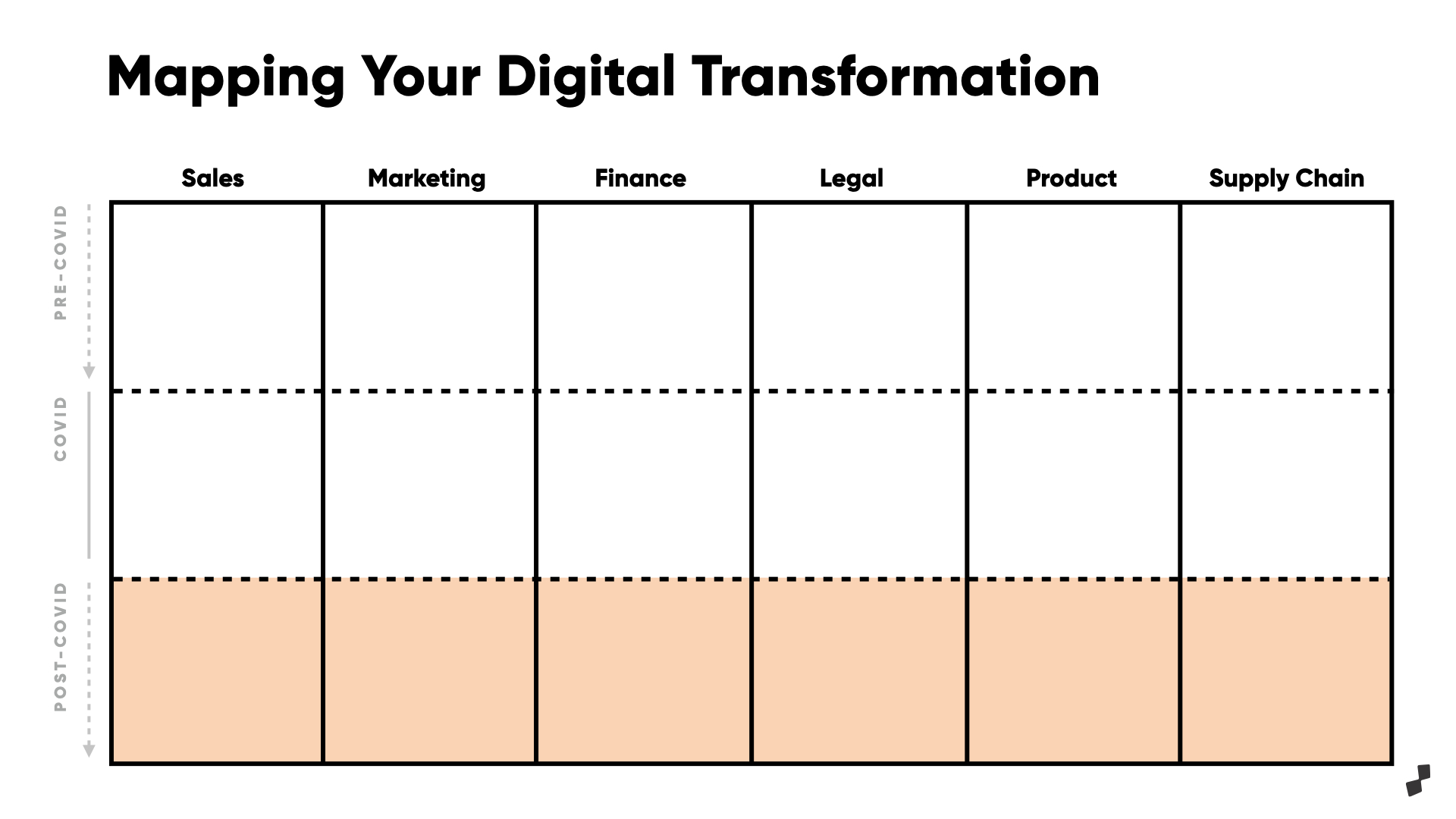Surprise! Your Business Went Through Instant Digital Transformation. Now What?

If you’re one of those glass-half-full types like me, you might be noticing the swell of viral articles and YouTube channels dedicated to sharing some good news.
This just makes me want to jump in with some excellent news. Did you know that there’s a good chance your company just saved a small fortune in IT development expenses in the last two months alone? Considering that market intelligence leader IDC predicts investment in digital transformation skyrocketing to around $2 trillion worldwide by 2022, your company just got an incredible head start.
This is not to say the way it all came down is something any of us would ever want, but the truth is that businesses of all sizes and scopes — regardless of the level of digital savviness — are now working remotely like never before. Forced into a virtual two-month experiment (so far), we have received an extraordinary opportunity to reimagine our brands and businesses, so they survive and genuinely thrive on the other side of the pandemic.
The question is, then, how do you take that unanticipated transformation and channel it into meaningful evolution?
Understanding digital transformation through a human-focused view
At its most basic level, digital transformation is about leveraging technology to deliver new or improved experiences to your customers, team, colleagues, and partners. It’s essential, though, that you put your emphasis on the right end of the equation. So while using appropriate digital tools is important, the experience — the human aspect — is critical.
In the end, what’s being transformed isn’t just how you work, but more importantly, how you connect and communicate.
Setting the digital aspect aside for a minute, think about how radically different your work interactions have become during the pandemic. For many of us, our day-to-day background is now our home life; pets, kids, partners, even favorite houseplants. “How are you?” is not just a trite way to start a conversation, but a genuinely compassionate question. And our needs are more grounded in the base of Maslow’s hierarchy (physiological and safety) than ever before, with the middle part — love and belonging — feeling perhaps the most urgent and poignant of all.
This gives you a springboard to use as you dive into codifying your company’s impromptu digital transformation: human consciousness. You can come from a place of true understanding and empathy for your customers, colleagues, and coworkers. From there, you can meaningfully assess your business’ virtual presence: what’s working, what’s not, and where you can innovate to expand and improve the overall experience.
Listen, learn, and prepare to leverage
Like any other experiment, documenting the changes, for better and worse, is the perfect place to start. What you’ll want to look for first are the friction points: what makes it harder for your customers to do business with you? And vice versa?
This might be easier for some businesses, particularly in industries like services, manufacturing, and others that require a high degree of in-person contact. But then again, you may have already figured out ways to minimize that friction. For example, therapists are doing a booming business using HIPAA-compliant video conferencing. A work colleague had their plumber use FaceTime to diagnose their stopped-up drain. And one of my team members raved to me about how she had a fantastic virtual makeover session with her hairstylist.
Now is the time to reimagine how to keep those sensory-driven connections going (if you haven’t already). For example, I work with a manufacturing company whose sales team does a ton of business face-to-face over meals. While they might not be able to take their clients out for breakfast, they can have a delivery service show up at their client’s door with a freshly brewed cup of coffee and a bagel before a virtual morning meeting. And if your product needs a demo, augmented reality is not some future technology — it’s here, and it’s affordable.
So while, of course, you can guess what your customers need your help with, you can always ask. Get into listening and learning mode, and inquire about their pain points. This may well be appreciated at such an uncertain and challenging time.
If you’re in a leadership role, the same goes for your team members. Ask what they’ve learned about each other. Is your team or department more resilient than they thought? Where is your company fragile? And where are you antifragile — finding ways not just to withstand hardship, but grow from it?
All of this information will help you design your business transformation. Notice that I didn’t qualify that with the word “digital.” Because you’ve already undergone an insta-digital transformation! Now it’s time to unpack the challenges and opportunities that technology has helped evolve or solve — and what it hasn’t.
Mapping your digital transformation experiment
To get a clear picture of what the forced use of remote technology has done for your business, we’ll do a simple mapping exercise. Once it’s done, you’ll have a blueprint that you can quickly execute against.
All you need is a pen and paper, and people from each department in your business. To get started, draw a grid with each department in columns across the top, and the phases of the pandemic in rows along the left-hand side.

Now, in the pre-COVID and COVID columns, jot down how you communicate and collaborate with your clients, coworkers, and colleagues or partners during each phase, along with what technology you commonly use (or not).
Next, you’ll want to start thinking about your post-COVID world by deciding what’s working, what isn’t, and where the holes are. An excellent way to do this is by using a simple exercise called Start/Stop/Continue. For each of the items on your graph, discuss what’s worked in the past to add value to those you serve. And what’s working today? (Those your “continue” items.) What’s no longer relevant? (Those are things you’ll stop.) And what are some things you can start doing with the help of technology that would serve your customers and your business better?
The interesting thing about this exercise is it’s not necessarily going to have black and white answers. Some areas of improvement will require humans to step up, and others can be solved by new, different, or better technology. Understand that this isn’t a linear approach — it’s an existential opportunity to evaluate your business practices and make some conscious decisions around how you can revolutionize the ways in which you can be more helpful (and, relatedly, profitable).
Once you’ve completed this exercise, you’ll have the fuel necessary to drive meaningful, value-adding changes. (This would also be a great point to try out another framework I’ve created to help people and brands jumpstart their progress and take action, called A.C.T.)
While I’m all for using the latest digital tools to improve your business, remember, they’re only as good as the human connections they support. So take advantage of your instant digital transformation and use all the virtual juice to get real about the way forward for your brand.
Want more help in decoding digital transformation? Check out this free white paper from my company, Digital Surgeons. It’s got some fascinating insights and solid advice for SMEs and any company interested in future-proofing their business.


